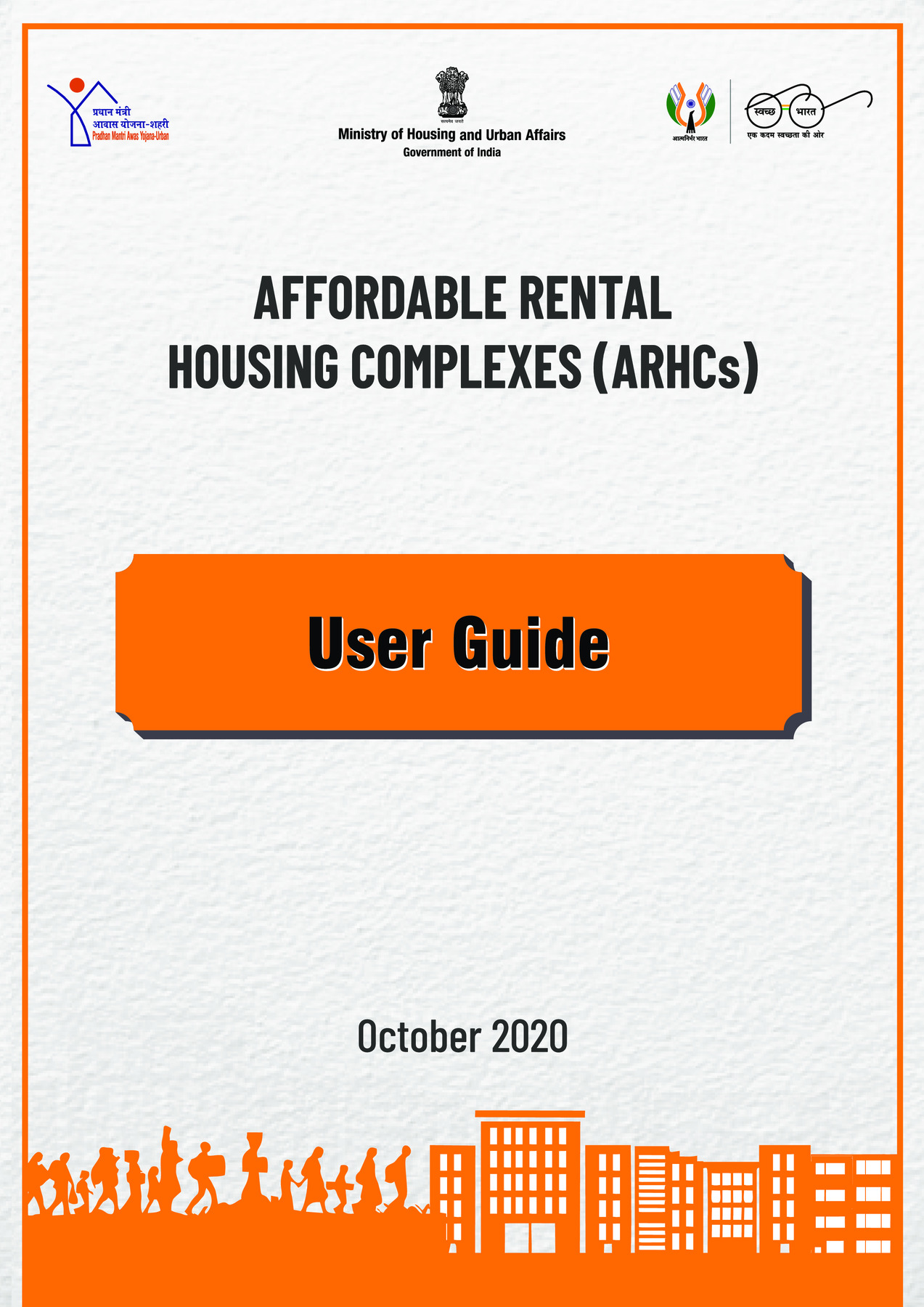| PDF Name | Affordable Rental Housing Scheme 2022 Guidelines PDF |
|---|---|
| Last Updated | October 7, 2022 |
| No. of Pages | 66 |
| PDF Size | 10.46 MB |
| Language | English |
| Category | Central Government |
| Topic / Tag | Govt Scheme Guidelines, Housing Schemes, Pradhan Mantri Yojana |
| Source(s) / Credits | arhc.mohua.gov.in |

COVID-19 pandemic has resulted in reverse migration of urban migrants/ poor in the country. Urban migrants stay in slums/ informal settlements/ unauthorised colonies/ peri-urban areas to save cost on housing. They need decent rental housing at affordable rate at their work sites.
In order to address this need, Ministry of Housing & Urban Affairs has initiated Affordable Rental Housing Complexes (ARHCs), a sub-scheme under Pradhan Mantri AWAS Yojana- Urban (PMAY-U). This will provide ease of living to urban migrants/ poor in Industrial Sector as well as in non-formal urban economy to get access to dignified affordable rental housing close to their workplace.
Affordable Rental Housing Scheme User Guide
- The Affordable Rental Housing Complex scheme will be implemented through two models.
- First model is through utilizing existing Government funded vacant houses to convert into ARHCs through Public Private Partnership or by Public Agencies
- Second model is through construction, operation and maintenance of ARHCs by Public/ Private Entities on their own available vacant land
- Beneficiaries for ARHCs are urban migrants/ poor from EWS/ LIG categories.
- ARHCs will be a mix of single/double bedroom Dwelling Units and Dormitory of 4/6 beds including all common facilities which will be exclusively used for rental housing for a minimum period of 25 years.
- These complexes will ensure a dignified living environment for urban migrants/poor close to their workplaces at affordable rates.
- This will unlock existing vacant housing stock and make them available in urban space. It will propel new investment opportunities and promote entrepreneurship in rental housing sector by encouraging Private/Public Entities to efficiently utilize their vacant land available for developing ARHCs
